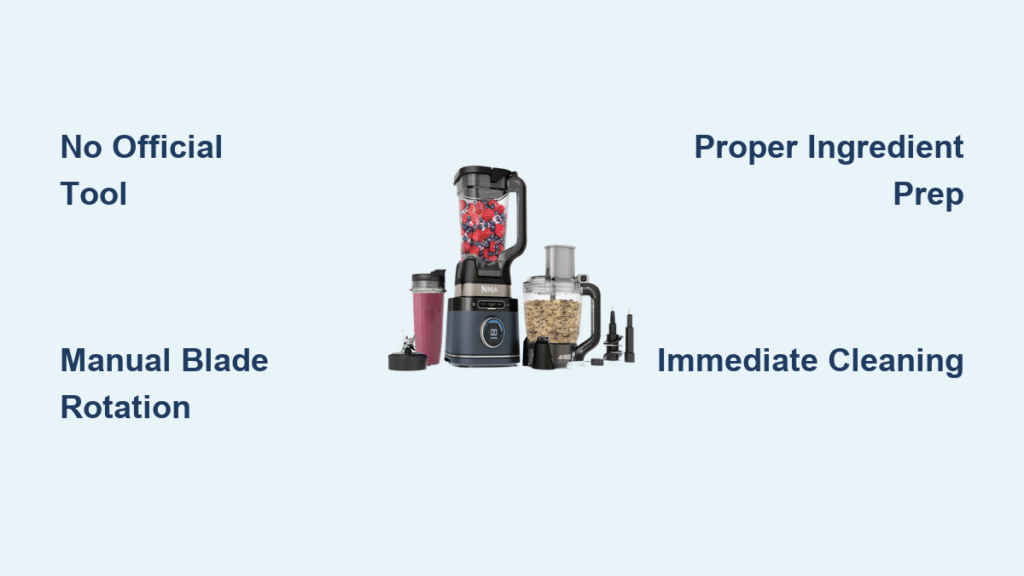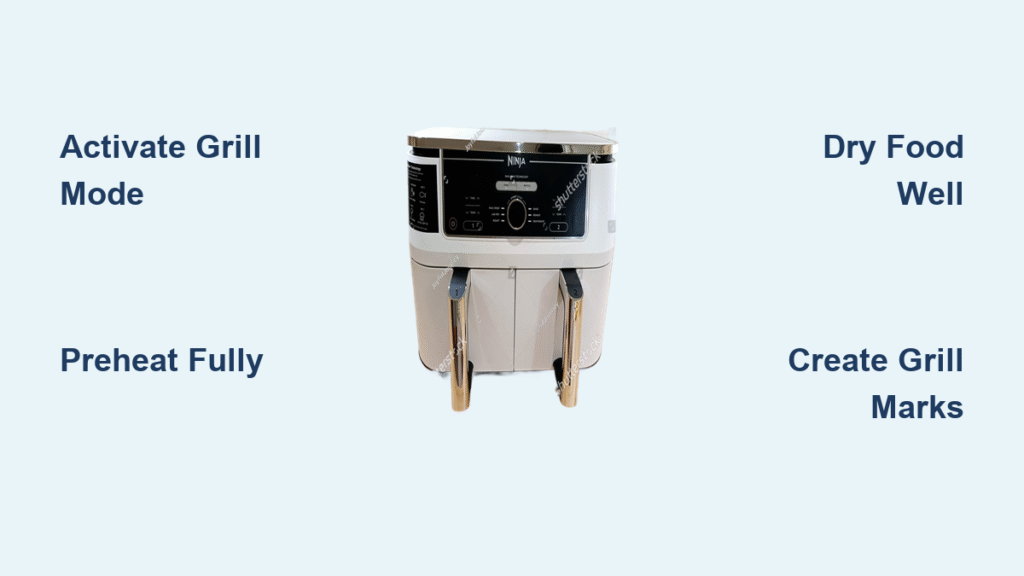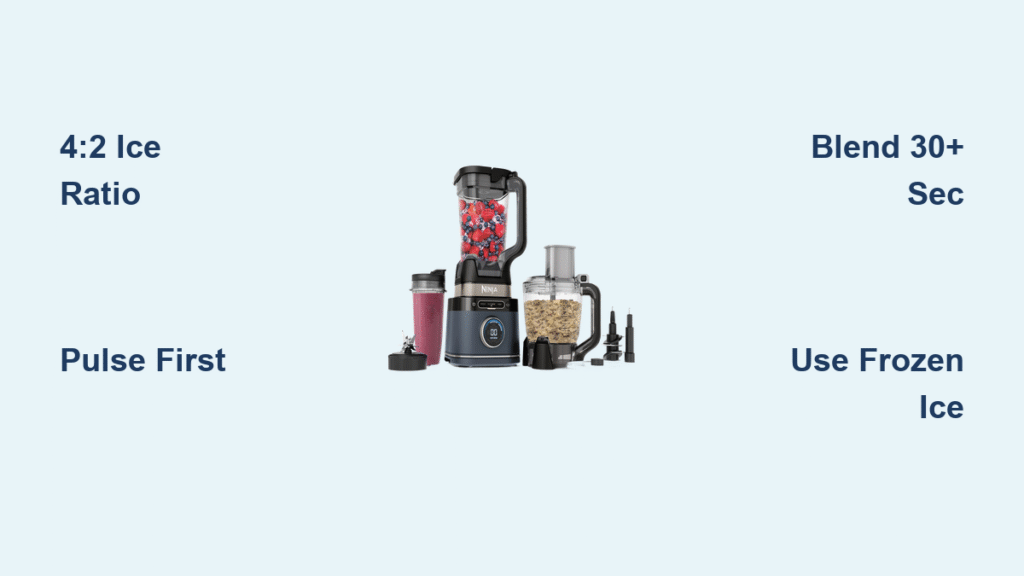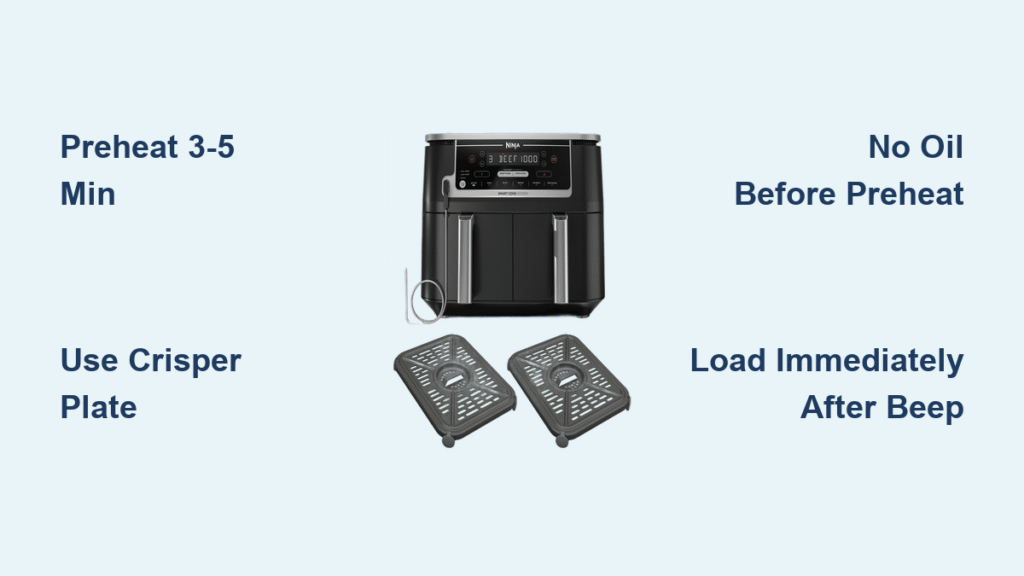Your Ninja blender suddenly stopped working mid-smoothie, and you’re searching for a solution. You’ve heard about a “Ninja unclog tool” that might solve your problem, but finding reliable instructions has proven difficult. Before proceeding with any unclogging attempts, it’s crucial to understand why verified information about this specific tool is hard to locate.
After thorough research into official Ninja resources, an important reality emerges: there is no standardized “Ninja unclog tool” documented in official SharkNinja product materials. This explains why so many users struggle to find clear instructions—they’re searching for a product that doesn’t officially exist in Ninja’s current documentation. Most Ninja blender models actually rely on proper ingredient preparation and cleaning techniques rather than a specialized unclogging device.
The confusion often stems from users improvising solutions when their blenders jam. Some owners have created their own tools from household items or repurposed accessories, leading to the myth of an official “unclog tool” that comes with Ninja blenders. Understanding this information gap is the first step toward properly maintaining your Ninja appliance without risking damage.
What Ninja Blenders Actually Include
Standard accessories only – When you purchase a Ninja blender, the package contains specific, documented accessories: pitchers, lids, blade assemblies, and recipe books. No Ninja product manual references a dedicated “unclog tool” as part of the standard package.
The pitcher handle misconception – Many users believe the hollow handle on certain Ninja pitcher models serves as storage for an unclog tool. In reality, this design feature functions solely as a cord wrap for storage convenience, not as a tool compartment.
Aftermarket confusion – Third-party sellers sometimes market “Ninja unclog tools” online, but these are not official SharkNinja products. These aftermarket tools may not be designed for your specific blender model and could potentially cause damage if used improperly.
Official Ninja Recommendations for Clogs

Prevention over tools – Ninja’s official support documentation emphasizes preventing clogs through proper ingredient preparation rather than relying on unclogging tools. Their guidance focuses on liquid-to-solid ratios and proper layering techniques to avoid jams entirely.
Manual blade rotation – When jams occur, Ninja’s troubleshooting guide instructs users to unplug the unit, remove the pitcher, and gently rotate the blade assembly by hand to dislodge blockages—never using any inserted tool that could damage the blades.
Cleaning protocol – For persistent residue, Ninja recommends filling the pitcher halfway with warm water and a drop of dish soap, then running it on low speed for 30 seconds before rinsing—eliminating the need for specialized unclogging tools.
Why the Unclog Tool Myth Persists
User-created solutions – Frustrated owners have developed improvised methods using chopsticks, spatulas, or other household items to clear jams, mistakenly believing these represent an official Ninja tool.
Misinterpreted accessories – Some Ninja models include a tamper for food processors, which people incorrectly assume works for blender unclogging. These tampers are designed for specific food processor models only and should never be used in blenders.
Social media misinformation – Viral videos and posts on platforms like TikTok often demonstrate “quick fixes” using non-standard tools, creating widespread but inaccurate beliefs about official Ninja accessories.
Proper Ninja Blender Maintenance
Correct ingredient preparation – Ninja’s official guidance specifies using adequate liquid (at least 1 cup per 2 cups of solids) and cutting ingredients to 1-inch pieces to prevent jams before they start.
Appropriate blending sequence – The manufacturer recommends adding liquids first, followed by soft ingredients, leafy greens, and frozen items last—creating a vortex that pulls ingredients downward naturally.
Immediate cleaning – Ninja advises rinsing the pitcher and blade assembly within 10 minutes of use to prevent residue from hardening, which eliminates most potential clogs before they become problematic.
Safe manual clearing – For minor jams, Ninja’s documented approach involves unplugging the unit, removing the pitcher, and gently twisting the blade assembly clockwise with your fingers—not inserting any tools that could damage the blades or void your warranty.
When to Seek Official Support
Electrical issues – If your blender shows no signs of power (no lights, no sound), this indicates an electrical problem rather than a clog. Contact Ninja customer service directly for troubleshooting assistance.
Persistent mechanical issues – When blades won’t rotate despite proper cleaning and maintenance, this suggests internal component failure requiring professional service—not an issue solvable by an “unclog tool.”
Warranty protection – Attempting to use non-standard tools for unclogging can damage internal components and void your warranty. Ninja’s official position is that their blenders don’t require specialized unclogging tools when used and maintained properly.
Authorized service channels – For genuine mechanical problems, Ninja provides a network of authorized service centers that can diagnose and repair issues without risking further damage from improvised solutions.
The Reality of “Ninja Unclog Tools” Online
Aftermarket product risks – Third-party “unclog tools” sold online aren’t tested or approved by SharkNinja. Using these could scratch pitcher interiors, damage blade assemblies, or create safety hazards during operation.
Misleading marketing – Many sellers capitalize on user frustration by labeling generic plastic tools as “official Ninja unclog tools,” despite having no relationship with the manufacturer.
Compatibility concerns – Even if a tool physically fits your blender, it may not be designed for your specific model’s blade geometry, potentially causing more damage than the original clog.
Warranty implications – Using non-approved tools to clear jams could void your warranty if damage occurs, resulting in costly repairs that would have been covered otherwise.
Best Practices for Ninja Blender Users

Consult official resources first – Always check Ninja’s website, product manual, or contact customer service before attempting repairs or using non-standard tools. Their support team can provide model-specific guidance.
Document issues properly – If you experience recurring jams, record a short video showing the problem and share it with Ninja support. They can often diagnose whether it’s a usage issue or genuine mechanical problem.
Join official user communities – Ninja’s authorized forums and social media groups provide access to verified information from both the company and experienced users who follow manufacturer guidelines.
Schedule regular maintenance – Instead of waiting for jams to occur, establish a cleaning routine that prevents buildup. Ninja recommends deep cleaning the blade assembly weekly by soaking in warm, soapy water.
Final Considerations for Blender Maintenance
The persistent myth of a “Ninja unclog tool” highlights a common challenge with modern appliances—users seeking quick fixes rather than understanding proper operation and maintenance. Ninja blenders are engineered to function optimally when used according to manufacturer specifications, making specialized unclogging tools unnecessary.
When clogs do occur despite proper use, the solution typically involves simple manual clearing techniques documented in your product manual, not mysterious hidden tools. Taking time to understand your specific Ninja model’s requirements will serve you better than searching for non-existent accessories.
For genuine mechanical issues that persist after following official cleaning procedures, contact Ninja customer service directly. Their technical support team can determine whether you need replacement parts or professional service—solutions that maintain your warranty protection and ensure your blender operates safely.
Remember that proper ingredient preparation and immediate cleaning after use prevent 95% of potential clogs. By focusing on these manufacturer-recommended practices rather than searching for mythical tools, you’ll extend your Ninja blender’s lifespan and enjoy trouble-free operation for years to come. The most effective “unclog tool” for your Ninja blender is actually knowledge of proper usage techniques combined with routine maintenance.





